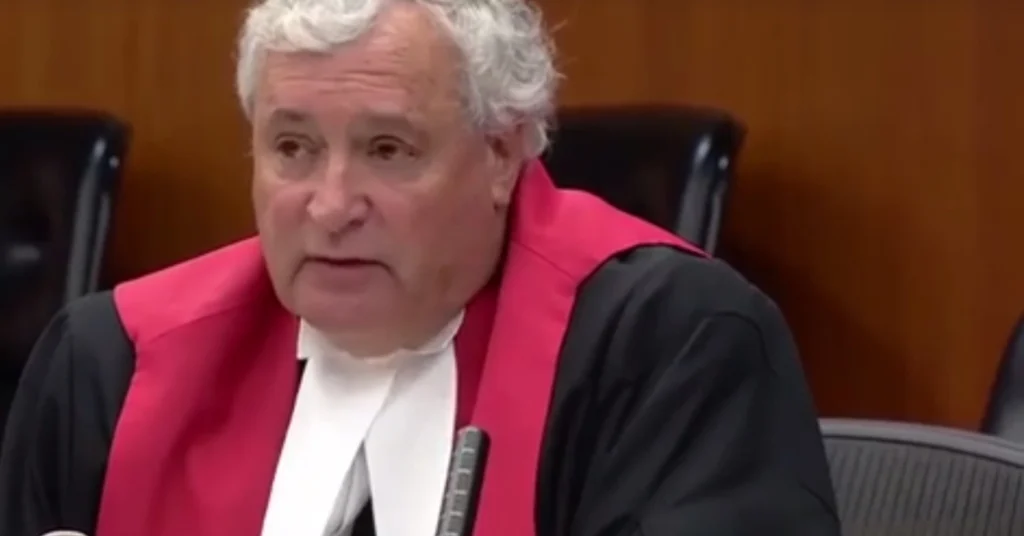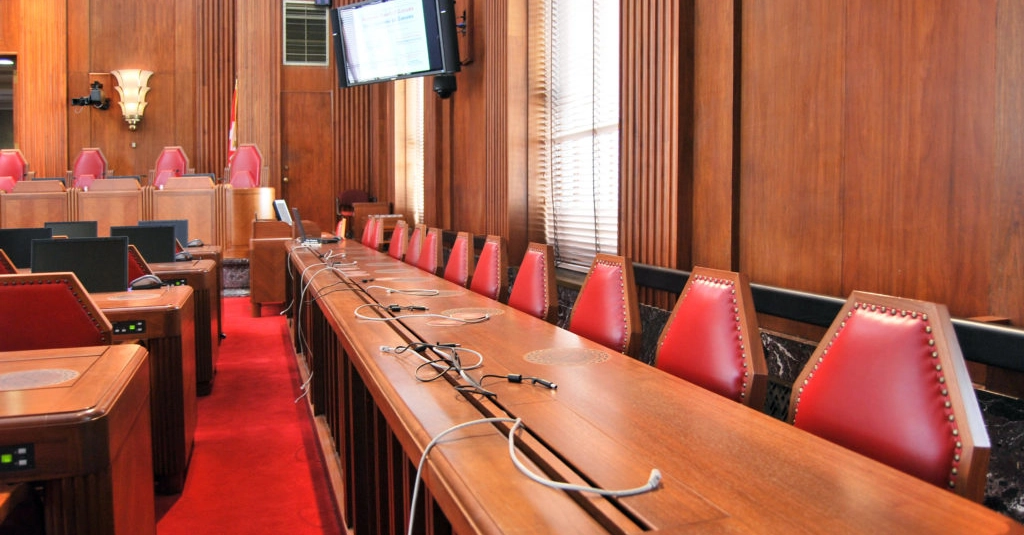Sept. 15 marked a historical day in the Alberta Court of Queen’s Bench — it was the first day in the court’s history that a verdict of a major crime trial was televised and made accessible to the public. The Travis Vader case, one that has been before the courts for over six years, was livestreamed by news organizations in Edmonton after many of them requested and successfully received permission to do so.
Media have since asked to livestream the next chapter in the case, the decision on Vader’s mistrial application. As they wait for a decision from Justice Denny Thomas on whether they are able to livestream the decision on Oct. 28, a former Chief Justice is advocating for more leniency for media and their desire to livestream high-profile cases.

The issue around allowing cameras into criminal courtrooms only recently came to light. Cameras were only allowed to record this judge’s decision after considerable lobbying from media sources for access.
While a newly-found affection with televised criminal court trials has only begun, court documents are already available upon request.
Currently, provincial and federal criminal trials are only open to those attending the actual courtroom. Broadcasters, however, are not permitted inside to film during the trial.
On the other hand, the Supreme Court of Canada televises all their proceedings from beginning to end.
Canadian courts operate on the principle of openness; this means the proceedings and operation of the court are completely open to the public. The paradox of this principle is that media are not actually allowed to record video inside the courts during procession, for fear of it having an effect on the outcome of the trial.
For instance, you could walk into to almost any court while it is in session and watch without disruption or hesitation. However, you would have to literally walk into the law courts, as it is the only way to observe the proceedings.
This means a reporter can certainly describe the actions and reactions they see in court, but without a recording, readers must rely on any observations made by the reporter, and cannot make these observations themselves.
‘It’s their right’
Former Chief Justice of Alberta Allan Wachowich is advocating on behalf of the increased media participation in the courtroom. He said that as long as the camera is fixated on certain members of the court, cameras should be allowed in the courtrooms – and the way media used them in the Vader case was sufficient.
“I think it’s very important that they show the judge reading his verdict because the public has the right to see it, and it’s educational,” Wachowich said.
“The camera only centred in on the judge when he was reading his verdict, and not on the witnesses or the council and that’s important.”
While secretly we all love to cut to the climax of a courtroom story, especially when trials can range over months (and in Vader’s case, years), it is these proceedings that build up to the final verdict that are equally important to the case.
Wachowich said by recording everything, it can introduce a different element and mindset to those testifying.
“You just add that dynamic to the courtroom when there are witnesses testifying. It adds to their sense of fear, trepidation, and anxiety to the tense situation that already exists,” said Wachowich.
While it’s unclear what exactly should be broadcast when streaming criminal trial cases in Alberta, it is the duty of the court to make the information available to the public. The challenge then becomes how to make the process and information as accessible to the public as possible without affecting the process.
So is there a place for cameras in the courtrooms in the near future? It is hard to say – the scales of justice did not come with a camera mount – but Wachowich said he’s in support of it. “I think it would be good to have the process open to the public so they can know and understand what happens in the courtrooms,” he said.
“It’s their right.”
Cover photo by Zhu, CC BY.





0 Comments